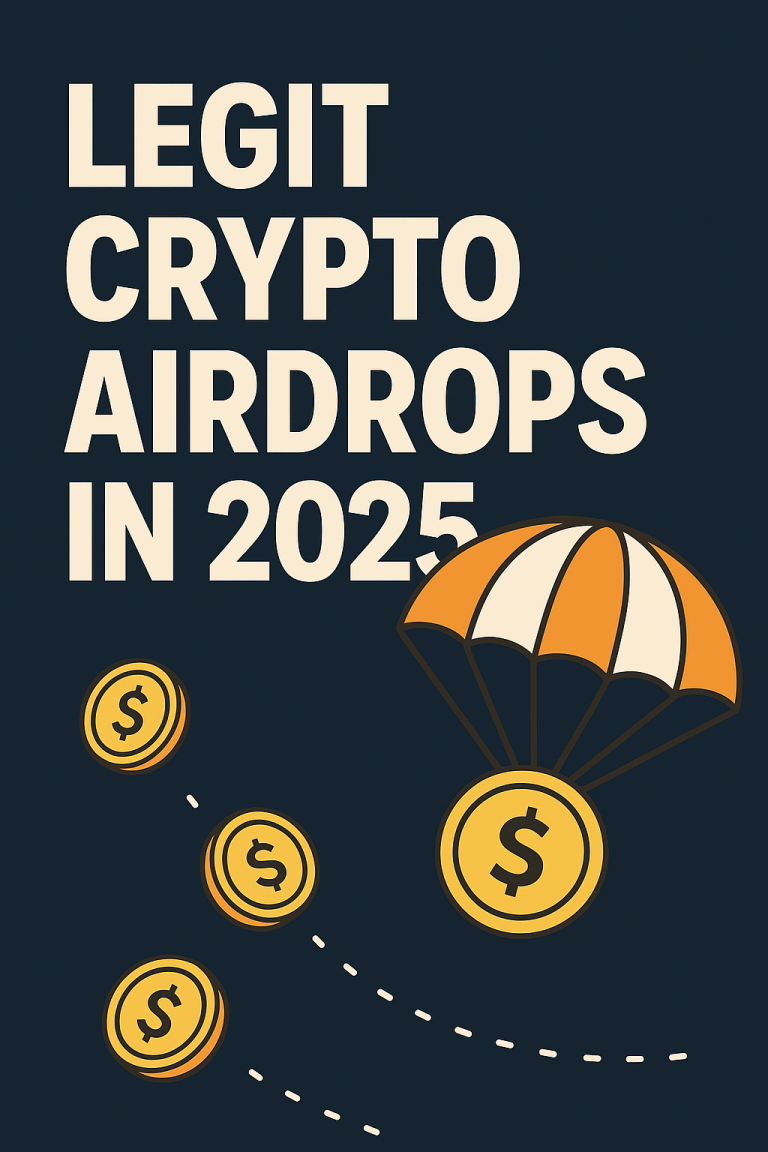Beginner’s Guide to Crypto Trading: Strategies to Start in 2025
Beginner’s Guide to Crypto Trading: Strategies to Start in 2025
Ready to dive into cryptocurrency trading but not sure where to start? This beginner’s guide to crypto trading is your roadmap to navigating the exciting, volatile world of digital assets in 2025. With Bitcoin hitting $111,000 and new regulations like the EU’s MiCA shaping the market, now’s a great time to learn crypto trading for beginners. This guide covers essential strategies, step-by-step tips, and tools to trade confidently while avoiding common pitfalls. Let’s get started!
Why Start Crypto Trading in 2025?
Crypto trading involves buying and selling digital assets like Bitcoin (BTC), Ethereum (ETH), or Solana (SOL) to profit from price movements. The market’s 24/7 nature and high volatility—think 10% daily swings—offer huge opportunities but also risks Mintos, 2024. For beginners, 2025 is promising due to:
- Market Growth: The crypto market cap exceeds $3.4 trillion, driven by institutional adoption NFTEvening, 2025.
- Regulation: U.S. Strategic Bitcoin Reserve and EU’s MiCA add stability NerdWallet, 2025.
- Accessibility: User-friendly platforms make trading easier than ever.
Top Crypto Trading Strategies for Beginners
Here are three beginner-friendly crypto strategies 2025 to help you trade smarter, not harder.
1. Dollar-Cost Averaging (DCA)

How It Works: Invest a fixed amount regularly (e.g., $50 weekly) in a cryptocurrency like Bitcoin, regardless of price, to reduce volatility’s impact.
Best For: Long-term investors with low time commitment.
Pros:
- Minimizes risk of buying at peak prices.
- Stress-free, no need to time the market.
- Ideal for beginners building a portfolio.
Cons:
- Slower profits compared to active trading.
- Requires patience during market dips.
Tip: Set up automatic purchases on Binance to stick to your plan. Learn more in our crypto investing guide.
2. HODLing

How It Works: Buy and hold cryptocurrencies for months or years, ignoring short-term price swings. Originating from a 2013 Bitcoin forum typo, HODL stands for “Hold On for Dear Life” CryptoMania, 2025.
Best For: Patient beginners who believe in crypto’s long-term growth.
Pros:
- Low maintenance, no daily monitoring.
- Potential for high returns (e.g., Bitcoin rose from $100 in 2013 to $98,000 in 2024).
- Avoids emotional trading mistakes.
Cons:
- Requires enduring market volatility.
- No immediate profits.
Tip: Store HODLed assets in a secure wallet like Trezor. See our top 5 crypto wallets.
3. Swing Trading
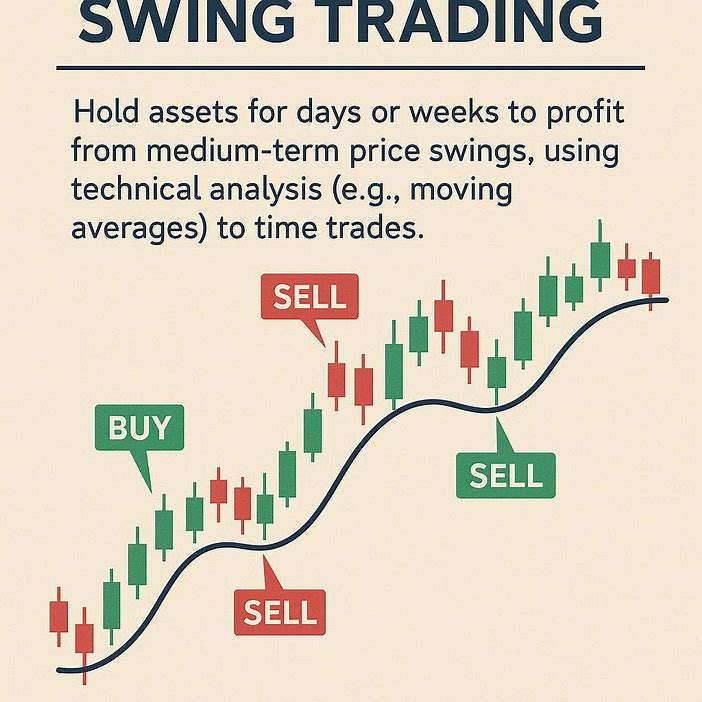
How It Works: Hold assets for days or weeks to profit from medium-term price swings, using technical analysis (e.g., moving averages) to time trades.
Best For: Beginners with time to learn charts and market trends.
Pros:
- Balances risk and reward better than day trading.
- Captures larger price moves (e.g., $3,280 to $3,720 for ETH in hours).
Cons:
- Requires basic technical analysis knowledge.
- Riskier than HODLing or DCA.
Tip: Use TradingView for chart analysis and set stop-loss orders to limit losses.
Step-by-Step Guide to Start Crypto Trading
Follow these steps to kick off your crypto trading journey in 2025.
Step 1: Choose a Reliable Exchange
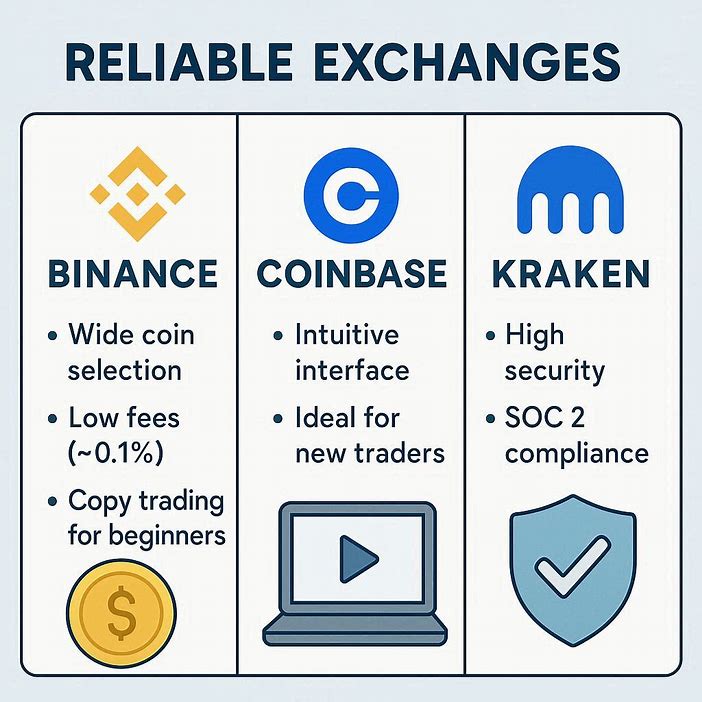
Select a beginner-friendly exchange with strong security and low fees:
- Binance: Wide coin selection, low fees (~0.1%), and copy trading for beginners.
- Coinbase: Intuitive interface, ideal for new traders.
- Kraken: High security with SOC 2 compliance.
Tip: Verify the exchange’s reputation via X discussions with #CryptoExchanges. See our best crypto exchanges guide.
Step 2: Set Up a Wallet
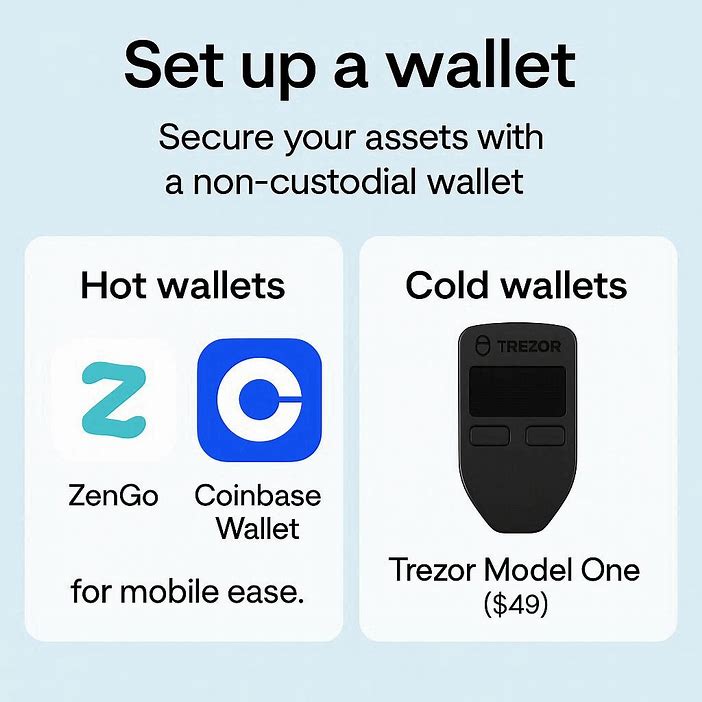
Secure your assets with a non-custodial wallet:
- Hot Wallets: Zengo or Coinbase Wallet for mobile ease.
- Cold Wallets: Trezor Model One ($49) for offline security.
Tip: Enable 2FA and back up recovery phrases offline. Check our crypto security tips.
Step 3: Fund Your Account

Deposit fiat (e.g., USD) via bank transfer, credit card, or Apple Pay. Start small ($50-$100) to test the waters Gate, 2025.
Tip: Use ACH transfers for low or no fees on most platforms.
Step 4: Choose Your Strategy
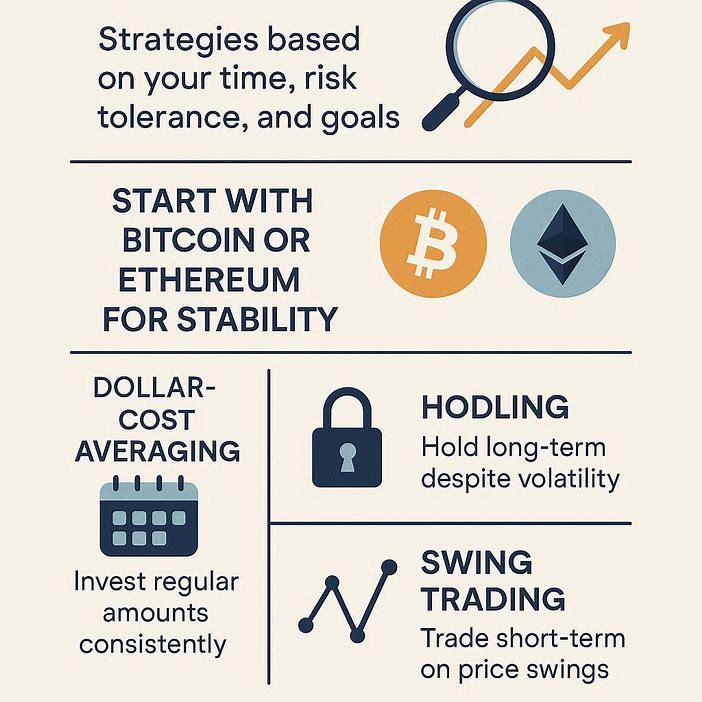
Pick a strategy (DCA, HODLing, or swing trading) based on your time, risk tolerance, and goals. Start with Bitcoin or Ethereum for stability.
Tip: Practice on Binance’s testnet to simulate trades without risk.
Step 5: Monitor and Manage Risks

- Stop-Loss Orders: Automatically sell if prices drop to a set level (e.g., 5% loss).
- Diversify: Spread investments across BTC, ETH, and stablecoins like USDC.
- Stay Informed: Follow X posts with #CryptoNews or trusted sites like CoinDesk.
Comparison Table: Crypto Trading Strategies
| Strategy | Time Commitment | Risk Level | Best For | Tools Needed |
|---|---|---|---|---|
| DCA | Low | Low | Long-term investors | Exchange (e.g., Binance) |
| HODLing | Low | Medium | Patient beginners | Secure wallet (e.g., Trezor) |
| Swing Trading | Medium | Medium-High | Active learners | TradingView, stop-loss orders |
Tools for Crypto Trading
- Exchanges: Binance, Coinbase, Kraken for trading.
- Wallets: Zengo, Coinbase Wallet, Trezor for storage.
- Analysis: CoinMarketCap for market data, TradingView for charts.
- Community: Join X discussions with #CryptoForBeginners for real-time insights.
Tips to Avoid Common Mistakes
- Start Small: Invest only what you can afford to lose Bankrate, 2025.
- Avoid Emotional Trading: Stick to your strategy, not FOMO or panic.
- Secure Your Assets: Use 2FA and non-custodial wallets to prevent hacks.
- Learn Continuously: Explore our blockchain DIY projects for deeper understanding.
Real-World Applications
- DIY Crypto Projects: Build a crypto price tracker using Python and a Coinbase Wallet.
- Tech and Gadgets: Pair a Trezor with a Raspberry Pi for a secure crypto node.
- AI Integration: Use AI trading bots like 3Commas for automated swing trading.
Conclusion
This beginner’s guide to crypto trading equips you with strategies like DCA, HODLing, and swing trading to start confidently in 2025. Choose a trusted exchange like Binance, secure your assets with a wallet like Zengo, and start small to minimize risks. With discipline and the right tools, you can navigate the $3.4 trillion crypto market like a pro. Ready to trade? Share your first steps in the comments or on X with #CryptoTrading and #CryptoForBeginners!
FAQ
- What’s the best crypto for beginners? Bitcoin and Ethereum are stable and widely accepted.
- How much should I invest? Start with $50-$100 to learn without high risk.
- Is crypto trading safe? Yes, with proper security (2FA, non-custodial wallets) and risk management.





